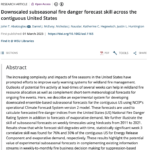Team
- Faculty: Samarth Swarup (UVA), Kirti Rajagopalan (WSU), Michael Brady (WSU), Josh Viers (UCM), Josue Medellin Azuara (UCM)
- Graduate students: Supriya Savalkar, WSU; Bhupinderjeet Singh (Biosys Eng, WSU)
- Undergraduate students: Alex Fetea (UVA)
Objective
- There is a need to better understand which agricultural fields used for irrigated production are fallowed in a drought. Our goal in this project is to develop empirical and simulation-based models that would predict the extent and location of fallowing of irrigated cropland under various types of drought conditions. This would allow water managers to better target drought mitigation programs and policies (e.g., water markets, reverse auctions, emergency well authorization, financial aid payments). The current practice is to retrospectively survey—through various methods—which fields were fallowed at the end of the season.
Hypothesis
Spatial clustering of drought-induced fallowing results from the spatial structure of irrigation districts that create positive spatial autocorrelation, as well as junior-senior priority calls that result in negative spatial autocorrelation.
Related Publications
2023
1.
Downscaled subseasonal fire danger forecast skill across the contiguous United States Journal Article
In: Atmospheric Science Letters, vol. 24, no. 8, pp. e1165, 2023, ISSN: 1530-261X, (_eprint: https://onlinelibrary.wiley.com/doi/pdf/10.1002/asl.1165).


